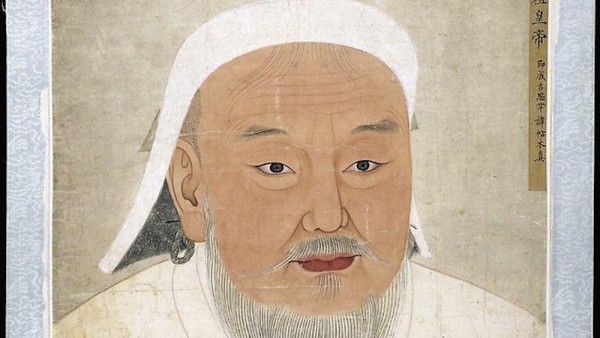Crowdsourcing Used to Solve 800-Year-Old Genghis Khan Mystery
| Michael A. Katz | | Jan 09, 2015 05:19 PM EST |
(Photo : National Museum of China) The researchers likened the search for Genghis Khan's tomb to finding “a needle in a haystack,” but without knowing what a needle looks like.
Researchers are combining hi-tech satellite imagery with good old-fashioned legwork to help find the tomb of Genghis Khan, which has been sought after by archaeologists and adventurers for almost 800 years.
Led by Albert Yu-Min Lin, a team from the University of California at San Diego is calling on volunteers to examine ultra-high resolution satellite images of the Mongolian landscape to spot any archaeological anomalies.
Like Us on Facebook
Motivated by the search for Genghis Khan's tomb, more than 10,000 online volunteers have been asked to find archaeological irregularities that didn't have any historical description of its potential visual appearance. In their hunt, the volunteers have so far put in a total of 30,000 hours, or the equivalent of 3 ½ years of work.
"With continued advances in sensor technologies, the capabilities and limitations of remote sensing is being determined less by data resolution and more by the methods that analyze the increasingly massive datasets," the team said in a report published in peer-reviewed journal PLOS ONE.
"Overwhelming data volumes have often led to automated analytical approaches. However, in visual analytics automated approaches lack the flexibility and sensitivity of human perception when seeking singular, undefined anomalies."
Trying to find anything after the passage of eight centuries is difficult enough, but the hunt for Genghis Khan's burial site is all the more difficult because he insisted that no one should know the location of his grave.
And according to legend, the loyal men who escorted the body to its tomb went to extraordinary lengths to make sure their fallen leader's request was fulfilled. According to the story passed down through dozens of generations, the men covered their tracks by killing all witnesses they encountered along the way to the site - and then committed suicide for good measure.
The researchers likened the search for the tomb to finding "a needle in a haystack," but with the added difficulty of not knowing what a needle looks like.
"Not a single burial of the Mongolian imperial family has been identified, and thus we cannot predefine a visual search [criterion]," said the report. "We have turned towards the crowd to not only tackle the data size challenge ... but more importantly to leverage the power of human perception."
The report added that "we hope that in this scheme, the collective will guide itself towards an agreement regarding what to look for."
TagsCrowdsourcing Used in Quest to Find Genghis Khan’s Tomb, ultra-high resolution satellite images, Albert Yu-Min Lin, The frustrating hunt for Genghis Khan’s long-lost tomb just got a whole lot easier, University of California at San Diego
©2015 Chinatopix All rights reserved. Do not reproduce without permission
EDITOR'S PICKS
-

Did the Trump administration just announce plans for a trade war with ‘hostile’ China and Russia?
-

US Senate passes Taiwan travel bill slammed by China
-

As Yan Sihong’s family grieves, here are other Chinese students who went missing abroad. Some have never been found
-

Beijing blasts Western critics who ‘smear China’ with the term sharp power
-

China Envoy Seeks to Defuse Tensions With U.S. as a Trade War Brews
-

Singapore's Deputy PM Provides Bitcoin Vote of Confidence Amid China's Blanket Bans
-

China warns investors over risks in overseas virtual currency trading
-

Chinese government most trustworthy: survey
-

Kashima Antlers On Course For Back-To-Back Titles
MOST POPULAR
LATEST NEWS
Zhou Yongkang: China's Former Security Chief Sentenced to Life in Prison

China's former Chief of the Ministry of Public Security, Zhou Yongkang, has been given a life sentence after he was found guilty of abusing his office, bribery and deliberately ... Full Article
TRENDING STORY

China Pork Prices Expected to Stabilize As The Supplies Recover

Elephone P9000 Smartphone is now on Sale on Amazon India

There's a Big Chance Cliffhangers Won't Still Be Resolved When Grey's Anatomy Season 13 Returns

Supreme Court Ruled on Samsung vs Apple Dispute for Patent Infringement

Microsoft Surface Pro 5 Rumors and Release Date: What is the Latest?













